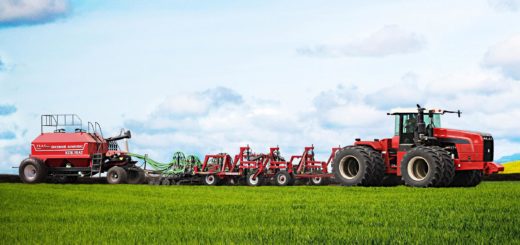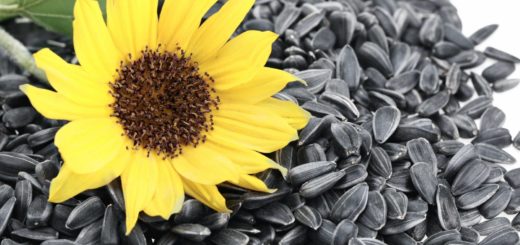What is microfertilizer in agriculture?
Content:
- Types and characteristics:
– Molybdenum;
– Borney;
– Copper;
– Chelated. - Benefits for plants.
- Competent application.
- Methods of application.
Many people wonder, why microfertilizers are so called. The point is, that they include fertilizers with this composition, that it is enough to use them in a very small dosage to treat the area. Each of the trace elements, which is a part of such fertilizers, participates in metabolic processes, development and nutrition of crops. The peculiarity of microfertilizers is the narrow action, therefore, boron cannot be replaced by copper or zinc with manganese. All of them are needed by plants to one degree or another. Deficit, along with an excess of trace elements, reduces yields and negatively affects the quality of cereals, fodder and fruit crops. And you can buy on this site ""
Types and main characteristics of microfertilizers
What are microfertilizers? All existing varieties are classified according to the main element, differ in characteristics, action and purpose.
- Salts of inorganic acids are poorly soluble and inferior to the effectiveness of chelated microfertilizers. They are used on slightly acidic and acidic soils. The main side effects are soil contamination, toxicity.
- Manganese fertilizers are used on chernozems, sandy and peat soils. Well suited for sowing corn, beets and potatoes.
- Rubber – these are complex microfertilizers, containing organic acids and trace elements. Well soluble, neutralize toxic substances. Stimulate the growth of crops, but contain all the necessary complex of trace elements.
- Zinc fertilizers are suitable for processing carbonate soils, on which citrus and fruit trees are grown, as well as for areas under beans, carrots and potatoes.
Finished complexes of microfertilizers contain from two microelements. The most popular compositions:
- "Sizam" with sucrose for seed preparation and foliar treatment of plants;
- "Master" for any soil, where grains and flowers are grown;
- “Reaction” to increase grain yields, of potatoes, corn.
Molybdenum
Molybdenum microfertilizers are used on forest and podzolic soils, as well as leached chernozems. Under such conditions, molybdenum acquires the greatest mobility and availability for legume roots, cereals and vegetables. If you plan to fertilize acidic soil, preliminary liming is carried out.
Varieties of molybdenum microfertilizers:
- powder, containing to 17 % molybdenum, for processing tubers and seed material;
- molybdenum superphosphate for backfilling;
- molybdate-ammonium acid as foliar fertilization or wrapping in the soil before sowing.
In industrial agriculture, waste from electric lamp production is used to increase yields 20 % and more. According to statistics, thanks to molybdenum microfertilizers it is possible to increase the yield of legumes 3 centners with 1 it, carrots and cabbage - on 25 %, clover hay - on 9 quintals. Sugar and the amount of vitamins in vegetables increase, and in legumes and cereals the protein composition improves.
Borney
Boron microfertilizers are suitable for sod-podzolic and peat soils. Used in areas under cabbage, beet, bean, linen, fruit and berry plants. Fertilizers reduce the risk of sunburn, pigmentation and leaf spot. There are three varieties of this type of microfertilizer:
- boron and boric acid containing boron 11 and 40 % respectively applied to seeds and plants, in which the first leaves appeared;
- boron superphosphate (0,4%) make in between rows under digging before sowing;
- nitrate with boron have a universal application, serve to prevent scabies and rot, improve the quality and taste characteristics of the crop.
Copper
Copper microfertilizers are intended for soils, characterized by a deficiency of this element, – wetlands and peat lowland soils. The use of fertilizers with copper increases grain yields by 5-6 times, stimulates the development of fruit tree buds. It is recommended to use for sowing sunflower, sugar beets and flax. Varieties of copper microfertilizers:
- copper sulphate with 1 % copper and 55 % potassium oxide for foliar feeding and seed treatment;
- pyrite (0,6%) in the form of ash.
Thanks to copper fertilizers, the content of vitamin C and sugar in fruit and vegetable crops increases, and in grain - protein.
Chelated
Chelated microfertilizers for plants owe their name to a special form in the form of claws. Each of the molecules in such fertilizers is in an organic shell, which allows plants to absorb nutrients quickly and efficiently. Chelates are used for garden trees, flowers and seedlings.
Invaluable benefits for plants
Organic fertile soils require almost no macro application- and microfertilizers. The latter are more often used for fertilizing limestone, sandy and poor soils. On such soils, plants suffer from iodine deficiency, vanadium, zinc, molybdenum, boron and other trace elements. Cereals and fruits do not ripen well, the harvest is characterized by low quality and taste, does not last long.
Given the composition of microfertilizers, the benefits of their use are obvious:
- increase the sugar content, vitamins, starch and protein in the crop;
- increase the resistance of crops to fungi and harmful bacteria;
- improve tolerance to sunlight and drought, temperature fluctuations;
- enhance the action of nitrogen, potassium, phosphorus and other nutrients, used in agricultural technology.
Competent application on different types of soils
Agronomists apply microfertilizers carefully, taking into account the deficiency of specific trace elements and selecting the appropriate composition, because the excess of even the most useful substances has a negative impact on yields and quality of agricultural products.
According to the degree of saturation of soil microelements, it is classified into four groups:
- Low-income.
- The average.
- Highly affluent.
- Soils with an excess of trace elements.
It is recommended to add microelements only to the soils of the first group. For the middle-income, foliar fertilization and pre-sowing seed preparation are provided. For soils of the third and fourth groups the introduction of microelements is considered inadmissible.
Ways to apply popular microfertilizers
That microfertilizers of grain and other cultures brought exclusively advantage, the dosage and recommendations for timing and methods of administration should be strictly followed. Time-tested standards look like this:
- Boron microfertilizers are dissolved in water at the rate 1 d of 5 l water.
- Molybdenum fertilizers are dosed at the rate 200 d of 1 ha and make under excavation. If spraying or dusting of plants is provided, enough to take 50 g of ammonium molybdate on 1 hectares of land. Used for foliar fertilization 100-200 d fertilizer of 1 it.
- Pyrite cinders are used once a day 5 years. It is recommended to apply in the fall for digging or in the spring two weeks before sowing. Copper sulfate is used in dosage 1 d of 1 quarter. m. For foliar feeding will need to be diluted 1 mg of copper sulfate in a bucket of water.
Before applying any fertilizers study the instructions, as the composition may change, and with it the dosage. The optimal approach involves chemical analysis of the soil and point application of insufficient trace elements.



